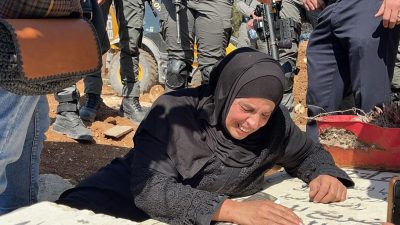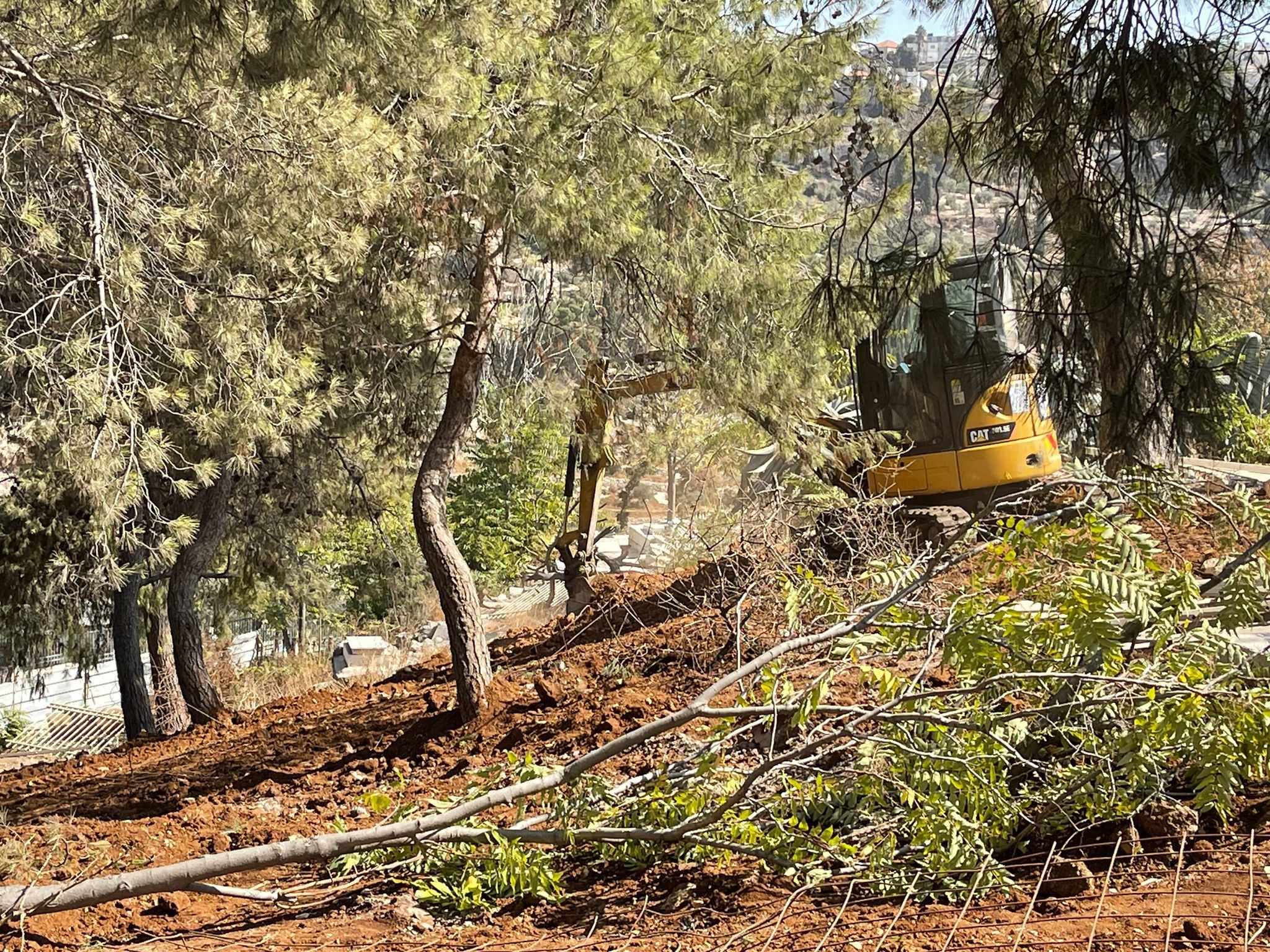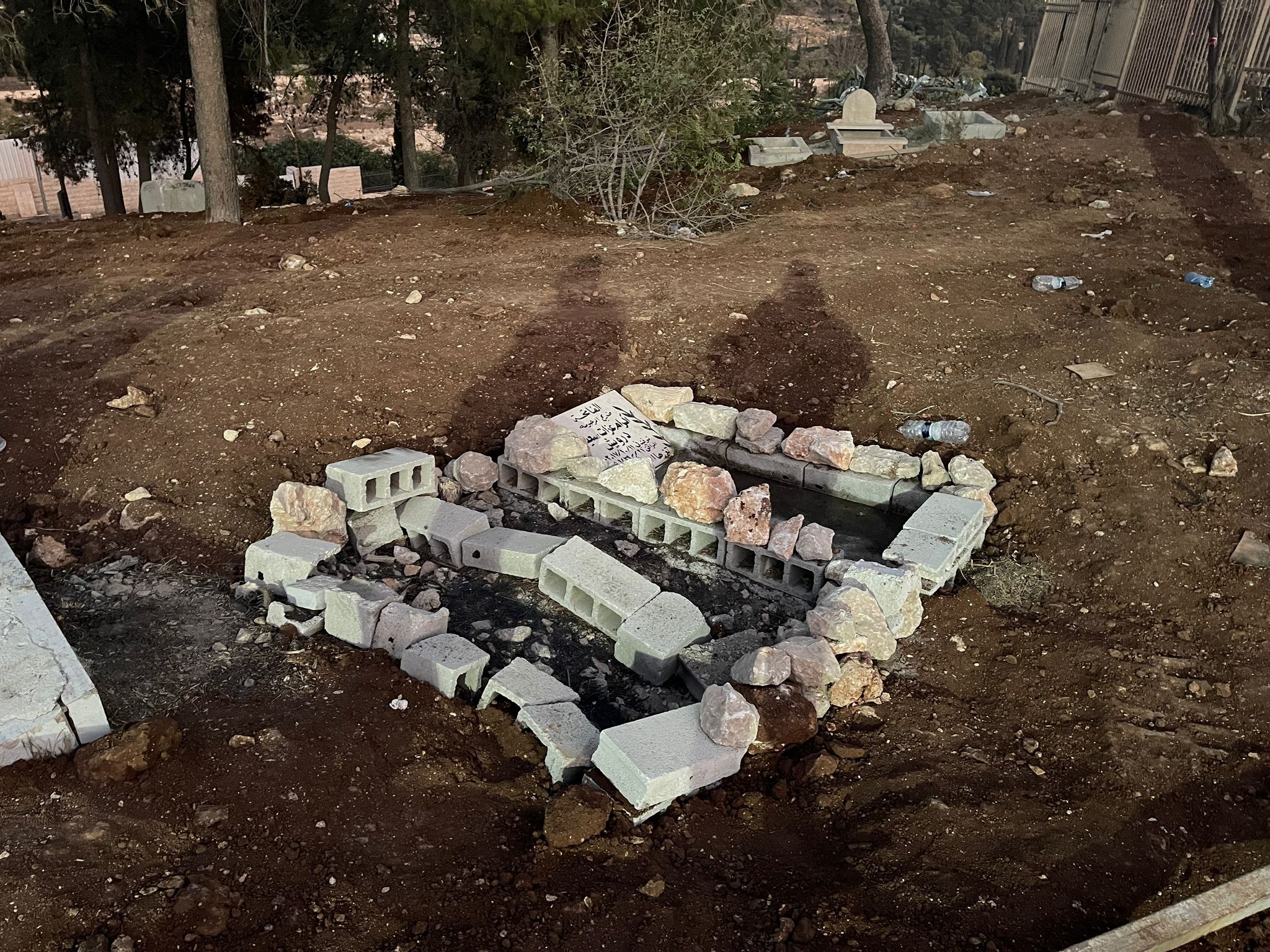Jerusalem Palestinians Fight to Preserve Cemetery Slated for Demolition
Footage of Ola Nababta shielding her son's grave from Israeli plans to build a biblical theme park has sparked outrage

All Global Research articles can be read in 51 languages by activating the “Translate Website” drop down menu on the top banner of our home page (Desktop version).
Visit and follow us on Instagram at @crg_globalresearch.
***
Just like the Palestinians living in occupied East Jerusalem, the dead in al-Yusufiya cemetery are not left in peace in their graves.
Israeli authorities have been desecrating Muslim cemeteries for decades, including through exhumations, excavation works that have uncovered bones, and construction projects where graves once stood.
The latest plans to build a biblical-themed park atop al-Yusufiya cemetery have provoked Palestinians and led to confrontations with Israeli forces, the Israeli municipality of Jerusalem, and staff from Israel’s Nature and Parks Authority.
The latest round of exhumations began three weeks ago in the part of al-Yusufiya known as the Martyrs’ Cemetery, which lies adjacent to one of the historic walls of the Old City of Jerusalem, and is where Alaa Nababta is buried.
Ola Nababta, a 54-year-old Jerusalemite, spends her days guarding the grave of her son Alaa, who died four years ago.
Every day, she leaves her house in Shuafat refugee camp north of East Jerusalem, in case officials from the Israel Nature and Parks Authority, or the Israeli municipality, come to exhume the grave or cover it with soil as a prelude to building the park.
Alaa’s younger brothers Ihab was shot dead in 2015 and Bahaa in 2016 by unknown assailants in Shuafat camp, where Bahaa ran youth groups and was well known for his social activism.
A widow who has lost three sons, Ola Nababta has already witnessed the devastation left behind by Israeli bulldozers in the area, most recently several weeks ago, when exhumation works uncovered bones, skulls and dentures.
“On that particular day I broke down and collapsed to the ground when I saw that the graves being exhumed neighboured that of my son Alaa, and I realised that his grave would undoubtedly be next,” she told Middle East Eye.
‘Pour the earth over me’
The mother’s intuition proved right, as on Monday officials returned with trucks full of steel and soil to cover the remaining graves, including Alaa’s.
As workers started pouring the soil, Nababta clung to the grave with all her might to prevent them from burying it.
WATCH: A Palestinian woman desperately tries to stop Israeli authorities from bulldozing her son’s grave.
Dozens of families fear their relatives’ graves will be exhumed from Al-Yusufiya Cemetery to make way for a Jewish national park. pic.twitter.com/ylT7jzsWni
— Middle East Eye (@MiddleEastEye) October 27, 2021
All attempts by Israeli soldiers to move her failed, as she told them: “Pour the earth over me and bury me beside him, oh my son Alaa, I am here, I will not leave.”
Nababta told MEE that representatives of the Committee for the Care of Islamic Cemeteries in Jerusalem had confirmed she could bury her son in the cemetery, which has held the bodies of deceased Muslims for centuries.
However, neither Nababta – who has been subpoenaed repeatedly by Israeli intelligence for questioning – nor the remains of her son have been left alone.
“I used to visit the tomb of my son just like any mother would,” she said. “But Israeli intelligence subpoenaed and interrogated me about the identity of the person who gave us permission to bury in this place, saying that it is prohibited.
“Nine months after Alaa’s death, the Israeli Ministry of Health tried to persuade me to move his body to another cemetery, but I adamantly refused because I want Alaa’s body to rest in peace,” she added.
“What makes them think I will allow them to cover his tomb and deprive me of the opportunity of visiting him and watering the flowers I have planted above his grave?”

Israeli bulldozers uproot centuries-old trees in Martyrs’ Cemetery (MEE/Aseel Jundi)
Nababta isn’t just worried about Alaa’s tomb – her fears extend to the graves of his brothers Ihab and Bahaa who are buried in Bab al-Rahmeh Cemetery, adjacent to Al-Aqsa Mosque.
Whenever CCTV cameras show her visiting the graves of her two other sons, Nababta says Israeli police officers rush her out and claim that Ihab and Bahaa too were buried in a restricted zone.
So far, only the grave of her husband, who died in 2018 and is also buried in al-Yusufiya, has been spared from harassment.
“I feel so painful because my sons were harassed and imprisoned prior to their death,” she said.
“Now, they (Israeli authorities) don’t want their bodies to rest in peace in their graves, and they want to cover them and build public parks.
Muslims have been burying their dead in the cemetery, whose construction was ordered by Salah al-Din ibn Ayyub, known in the West as Saladin, for 800 years.

After graves were exhumed in Martyrs’ Cemetery earlier this month by Israeli authorities, Jerusalemites reburied the remains in the same place and identified the grave with stones (MEE/Aseel Jundi)
Excavation and exhumation works by Israeli authorities have been taking place in the Martyrs’ Cemetery section of al-Yusufiya, an area of around four and a half dunams (4,500 square metres).
Jordanian, Iraqi and Palestinian soldiers killed while fighting against Israeli forces in Jerusalem during the 1967 war are buried there, as is Alaa.
In 2014, Israeli authorities banned Jerusalemites from burying their dead in Martyrs’ Cemetery, demolishing more than 20 tombs and covering the area with cement.
In December, bulldozers resumed further dredging and construction works at the cemetery – however a complaint brought before the Israeli courts temporarily succeeded in halting the works until September this year.
On 10 October, Jerusalemites came out to protest as Israeli police and bulldozers dug out bodies, and were able to rebury the remains in the cemetery on the following day.
Disinformation and forgeries
The Committee for the Care of Islamic Cemeteries in Jerusalem looks after the city’s Muslim cemeteries, laying tiles, removing weeds, and other general upkeep.
The committee has submitted objections to Israeli courts to stop the bulldozing at the Martyrs’ Cemetery.
Mustafa Abu Zahra, the head of the committee, told MEE that the introduction on Monday of large quantities of soil to fill in the remaining graves, as well as the erection of a steel fence to separate the Martyrs Cemetery from the rest of Al-Yusufiya, indicates that the conversion of the area into a theme park is imminent.
Zahra reiterated that an Israeli court had allowed workers to continue excavation works despite an appeal, after human remains were found in an area that the municipality claims was never a cemetery.
Hamza Quttaineh, a Jerusalemite lawyer advocating for the Martyrs Cemetery before the Israeli courts, told MEE that the municipality and the Israel Nature and Parks Authority have deployed various forms of disinformation and forgeries to deny the existence of the cemetery.
In attempting to convert the cemetery into a park, Quttaineh said authorities had also shown no respect whatsoever to the sanctity of the deceased.
“There are huge machinations undertaken by the occupation municipality, along with the Israel Nature and Parks Authority and the judicial system, that provide the legal coverage needed for the Judaisation project encompassing the historical wall of Jerusalem’s Old City,” he said.
The municipality is insisting on classifying the land as a green zone that must be turned into a park within the premises of the Sacred Dock Project, said the lawyer.
“So far this piece of land did not join the project and it should not be dislodged from it due to its importance.”
*
Note to readers: Please click the share buttons above or below. Follow us on Instagram, @crg_globalresearch. Forward this article to your email lists. Crosspost on your blog site, internet forums. etc.
Featured image: As workers started pouring the soil, Ola Nababta clung to the grave with all her might to prevent them from burying it (MEE/Aseel Jundi)

